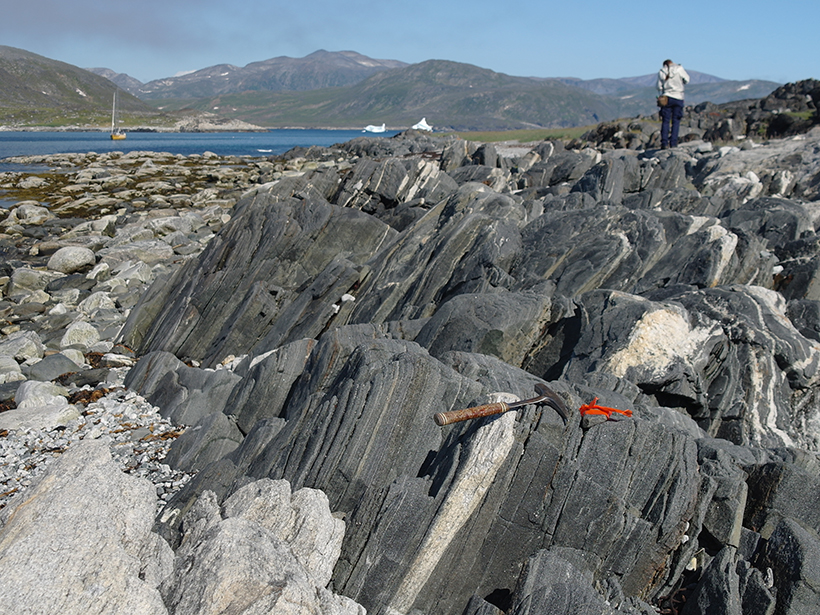It’s hard to imagine Earth without water. After all, water helps puts the “blue” in astronomer Carl Sagan’s famous description of our planet as a “pale blue dot.”
But billions of years ago, there was no water on Earth’s surface, and exactly when our pale dot got its liquid “blue” is a fuzzy tale, largely because most of the rocks that existed back then have been erased by different geologic processes.
The first known interaction between water on Earth’s surface and rock happened about 3.5 billion years ago.
However, in the northeastern region of Labrador, where polar bears patrol the landscape, some of Earth’s oldest rocks exist. And these rocks, according to new research, bear chemical evidence revealing that the first known interaction between water on Earth’s surface and rock happened about 3.5 billion years ago. The results were published in April in Geology.
Deciphering the Saglek
The discovery started in 2012, when a team of scientists ventured into the Arctic for a 5-week expedition. They went there because, according to Adrien Vezinet, a geochemist at the University of Alberta in Edmonton who led the team that made the new find, there has been very little research into these Arctic rocks—part of the Archean-aged Saglek Block—over the past 3 decades or so.
Vezinet thought that there might be more to learn.
He was right.
Vezinet and his team measured the concentration of oxygen isotopes in zircon crystals in the rocks, and they found an unusually high concentration of oxygen isotopes coinciding with parts of the rock that are about 3.5 billion years old.
“The observed deviation in our zircon is almost twice higher than the ‘normal’ deviation measured in early Archean zircon,” Vezinet said. “It’s pretty much the only value that’s that high during the Archean.”
The only way that the rocks could acquire such an isotope value is if they were in contact with water on the planet’s surface, he explained.
“It’s the oldest evidence of this elevated oxygen,” said Simon Wilde, a geologist at Curtin University in Australia who was not involved in the new research.
Domain of the Zircons
Zircon is the superman of minerals: It’s resilient and can last an extremely long time in the planet’s rock record. Nevertheless, anything that persists for billions of years of the planet’s history is likely to face forces that can alter its original chemical composition. So the chief challenge facing Vezinet and his team was being able to say for sure that the crystals acquired their elevated oxygen isotope signature 3.5 billion years ago and not at some later time.
To sort this out, the team took a close-up look at crystalline domains within individual zircon crystals, something that was not really possible with technology that existed a few decades ago. Vezinet explained that if the domains had changed their composition since they formed, then the crystal structure, as well as the domain’s chemical makeup, ought to have altered as well. This domain-by-domain approach allowed the team to pinpoint which areas of each zircon crystal had oxygen isotope values that formed at the same time that the crystal formed and thus say for certain that the isotope value is a result of interactions with 3.5-billion-year-old surface waters.
One unexplored domain, though, is that it is not clear yet just how much surface water there was back then. It could have been a small inland sea, or it could have been an entire ocean. “I’d imagine that it’s widespread,” said Wilde.
But to be sure, tests of the isotopic content of similar rocks elsewhere on the planet need to be done to see just how blue our pale dot truly was.
—Lucas Joel ([email protected]), Freelance Journalist
Citation:
Joel, L. (2019), When water met rock, Eos, 100, https://doi.org/10.1029/2019EO123847. Published on 17 May 2019.
Text © 2019. The authors. CC BY-NC-ND 3.0
Except where otherwise noted, images are subject to copyright. Any reuse without express permission from the copyright owner is prohibited.

